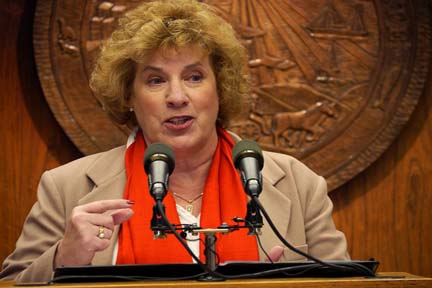Open enrollment for the individual health insurance market starts November 1. For the second year in a row, Alaska residents will see cheaper monthly rates. But insurance rates remain high, compared to most other states in the country.
In 2018, the state saw an average rate decrease of 22.4 percent on the individual market. Rates are going down again this year, though by a much smaller amount: 6.5 percent.

“This year we’re looking at a Premera gold plan, for somebody who’s 45, last year it would have been $858/month. This year, it’s down to $740,” said Lori Wing-Heier, the director of the state’s division of insurance. That’s the agency that regulates the individual insurance market.
One of the reasons rates are lower: the state established a reinsurance program that separates the highest cost patients from the rest of the market.
Wing-Heier says the decrease in rates is not guaranteed to continue.
“Depending on the claims experienced, it most certainly could go back up again,” Wing-Heier said. “But Alaska is fortunate in that we have the reinsurance program, which does provide us some stability.”
She says in the last two years, the state has also seen healthcare costs decrease through some medical providers, based on agreements with insurers.
There is only one insurance carrier in Alaska for individual market customers seeking insurance through the Affordable Care Act: Premera Blue Cross Blue Shield of Alaska.
Jim Havens, with Premera, says the reinsurance program is a major reason rates went down but there are other factors.
“If people move in and move out of the state at an abnormal level, that changes rates, and then ultimately, if the providers decide to change less for goods or services, or if we’re able to convince people to go to states where the cost of care is less, like Washington State, then we encourage that and make it easy for them to go to a state like Washington to seek their care,” Havens said.
Despite lower monthly rates, Premera hasn’t seen an increase in enrollment. Wing-Heier says last year, the market actually lost customers. She says uncertainty in the insurance world likely contributed to that.
“I think a lot of people were just concerned that the ACA would still be there, that the subsidies would still be there, and how much the plans would be,” Wing-Heier said. “This year it hasn’t been as tumultuous in the ACA market. So we’re hoping that people come back and give it a look and see what the premiums really are.”
And Havens, with Premera, says rate decreases mean more to customers who aren’t eligible for insurance subsidies. The vast majority of Alaskans who buy insurance on the individual market receive subsides.
Open enrollment lasts through December 15. Anyone who wants coverage through the individual market has to take action within this window.
And those residents who already have coverage through the end of this year and don’t choose a new plan will be automatically signed up for the most similar plan available in 2019.
The state encourages residents to look at how plans may be different in the new year, based on changes within the network. One of those changes affects the cost of care outside of Alaska and Washington.




